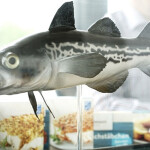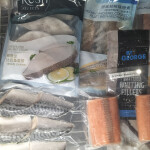A study of seafood bought in the U.S. state of New Hampshire has found perfluoroalkyl and polyfluoroalkyl substances (PFAS) in popularly consumed seafood species.
Published in the scientific healthcare publication Exposure and Health, “Patterns of Seafood Consumption Among New Hampshire Residents Suggest Potential Exposure to Per- and Polyfluoroalkyl Substances” found instances of PFAS in 26 seafood species, including cod, haddock, lobster, salmon, scallop, shrimp, and tuna.
PFAS are a group of human-made chemicals used in a wide range of consumer and industrial products, according to the U.S. Food and Drug Administration. They do not easily break down, and further, some types have been shown to accumulate in the environment and in human bodies, with potentially harmful impact. Studies have linked PFAS build-up in humans to cancer, liver and kidney harm, damage to human reproductive and immune systems, and other diseases, though the USDA has previously issued notices saying the agency is not concerned about PFAS levels in seafood.
The new study examined seafood for sale at a seafood market in Portsmouth, New Hampshire, that sourced the products from a range of locations, and found 26 different PFAS compounds. Shrimp and lobster showed the highest levels of PFAS compounds, with average concentrations reaching up to 1.74 and 3.30 nanograms per gram of flesh.
The study also surveyed 1,829 New Hampshire residents and found they consumed more seafood than the average per capita total for the Northeastern U.S. region, which has one of the highest per capita seafood consumption rates in the country.
"Our recommendation isn't to not eat seafood – seafood is a great source of lean protein and omega fatty acids. But it also is a potentially underestimated source of PFAS exposure in humans," Dartmouth Geisel School of Medicine Professor of Epidemiology and Author Megan Romano told Health News. “But it also is a potentially underestimated source of PFAS exposure in humans.”
Of the surveyed adults, 95 percent consumed seafood within the past year, with the highest volume of species reported shrimp, haddock, salmon, and canned tuna.
According to Romano, PFAS concentration analysis has typically looked at fresh-water fish, which Americans are less likely to eat. The new research into PFAS concentrations in ocean-caught and -reared seafood is important to understanding what the risks could be to U.S. seafood consumers, she said.
"Understanding this risk-benefit trade-off for seafood consumption is important for people making decisions about diet, especially for vulnerable populations such as pregnant people and children," Romano said.
Middlebury College Professor of Environmental Studies and Researcher Kathryn Crawford said most people don’t need to worry about the risks of ingesting PFAS while enjoying eafood.
"People who eat a balanced diet with more typical, moderate amounts of seafood should be able to enjoy the health benefits of seafood without excessive risk of PFAS exposure,” Crawford said.
However, the study does highlight a need for new federal guidelines on consumption based on the risks of PFAS exposure, according to Celia Chen, a study co-author and a research professor with the Dartmouth Department of Biological Sciences.
"Top predator species such as tuna and sharks are known to contain high concentrations of mercury, so we can use that knowledge to limit exposure. But it's less clear for PFAS, especially if you start looking at how the different compounds behave in the environment," Chen said.
In March 2024, the USDA released a document to guide the seafood industry through a likely crackdown coming on PFAS contamination.








